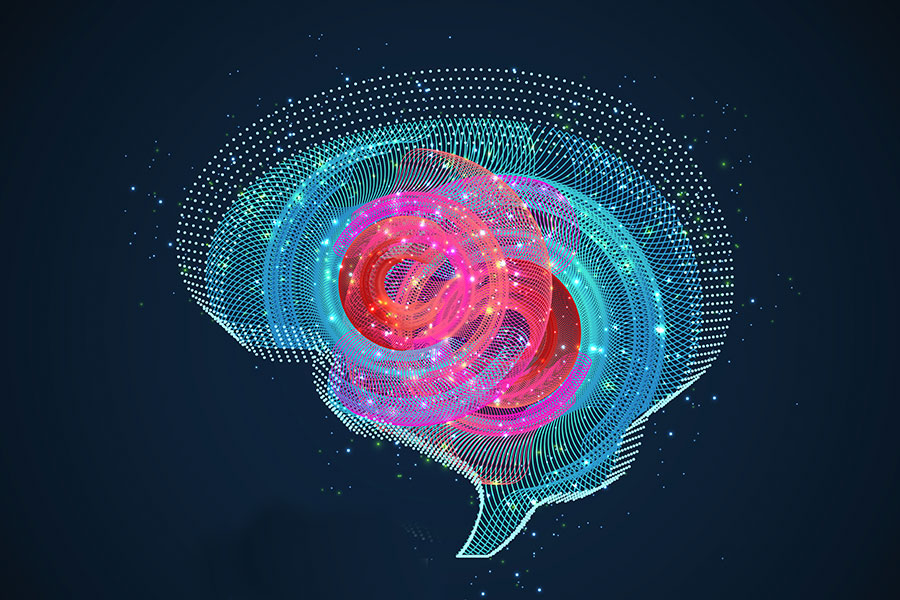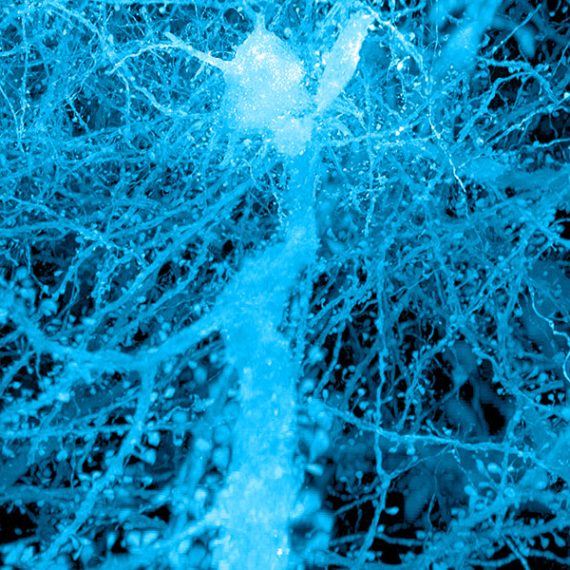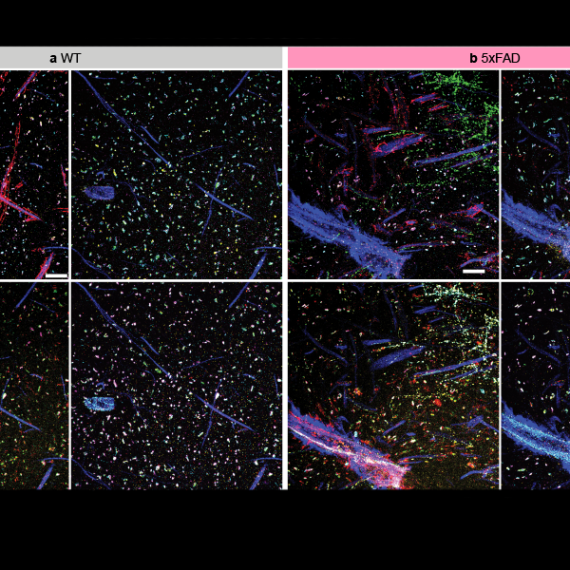Calling neurons to attention
Researchers zero in on an attention-generating part of the brain.

The world assaults our senses, exposing us to more noise and color and scents and sensations than we can fully comprehend. Our brains keep us tuned in to what’s important, letting less relevant sights and sounds fade into the background while we focus on the most salient features of our surroundings. Now, scientists at MIT’s McGovern Institute have a better understanding of how the brain manages this critical task of directing our attention.
In the January 15, 2023, issue of the journal Neuron, a team led by Diego Mendoza-Halliday, a research scientist in McGovern Institute Director Robert Desimone’s lab, reports on a group of neurons in the brain’s prefrontal cortex that are critical for directing an animal’s visual attention. Their findings not only demonstrate this brain region’s important role in guiding attention, but also help establish attention as a function that is distinct from other cognitive functions, such as short-term memory, in the brain.
Attention and working memory
Mendoza-Halliday, who is now an assistant professor at the University of Pittsburgh, explains that attention has a close relationship to working memory, which the brain uses to temporarily store information after our senses take it in. The two brain functions strongly influence one another: We’re more likely to remember something if we pay attention to it, and paying attention to certain features of our environment may involve representing those features in our working memory. For example, he explains, both attention and working memory are called on when searching for a triangular red keychain on a cluttered desk: “What my brain does is it remembers that my keyholder is red and it’s a triangle, and then builds a working memory representation and uses it as a search template. So now everything that is red and everything that is a triangle receives preferential processing, or is attended to.”
Working memory and attention are so closely associated that some neuroscientists have proposed that the brain calls on the same neural mechanisms to create them. “This has led to the belief that maybe attention and working memory are just two sides of the same coin—that they’re basically the same function in different modes,” Mendoza-Halliday says. His team’s findings, however, say otherwise.
Circuit manipulation
To study the origins of attention in the brain, Mendoza-Halliday and colleagues trained monkeys to focus their attention on a visual feature that matches a cue they have seen before. After seeing a set of dots move across the screen, they must call on their working memory to remember the direction of that movement for a few seconds while the screen goes blank. Then the experimenters present the animals with more moving dots, this time traveling in multiple directions. By focusing on the dots moving in the same direction as the first set they saw, the monkeys are able to recognize when those dots briefly accelerate. Reporting on the speed change earns the animals a reward.
While the monkeys performed this task, the researchers monitored cells in several brain regions, including the prefrontal cortex, which Desimone’s team has proposed plays a role in directing attention. The activity patterns they recorded suggested that distinct groups of cells participated in the attention and working memory aspects of the task.
To better understand those cells’ roles, the researchers manipulated their activity. They used optogenetics, an approach in which a light-sensitive protein is introduced into neurons so that they can be switched on or off with a pulse of light. Desimone’s lab, in collaboration with Edward Boyden, the Y. Eva Tan Professor in Neurotechnology at MIT and a member of the McGovern Institute, pioneered the use of optogenetics in primates. “Optogenetics allows us to distinguish between correlation and causality in neural circuits,” says Desimone, the Doris and Don Berkey Professor of Neuroscience at MIT. “If we turn off a circuit using optogenetics, and the animal can no longer perform the task, that is good evidence for a causal role of the circuit,” says Desimone, who is also a professor of brain and cognitive sciences at MIT.
Using this optogenetic method, they switched off neurons in a specific portion of the brain’s lateral prefrontal cortex for a few hundred milliseconds at a time as the monkeys performed their dot-tracking task. The researchers found that they could switch off signaling from the lateral prefrontal cortex early, when the monkeys needed their working memory but had no dots to attend to, without interfering with the animals’ ability to complete the task. But when they blocked signaling when the monkeys needed to focus their attention, the animals performed poorly.
The team also monitored activity in the brain visual’s cortex during the moving-dot task. When the lateral prefrontal cortex was shut off, neurons in connected visual areas showed less heightened reactivity to movement in the direction the monkey was attending to. Mendoza-Halliday says this suggests that cells in the lateral prefrontal cortex are important for telling sensory-processing circuits what visual features to pay attention to.
The discovery that at least part of the brain’s lateral prefrontal cortex is critical for attention but not for working memory offers a new view of the relationship between the two. “It is a physiological demonstration that working memory and attention cannot be the same function, since they rely on partially separate neuronal populations and neural mechanisms,” Mendoza-Halliday says.
Paper: "Dissociable neuronal substrates of visual feature attention and working memory"




